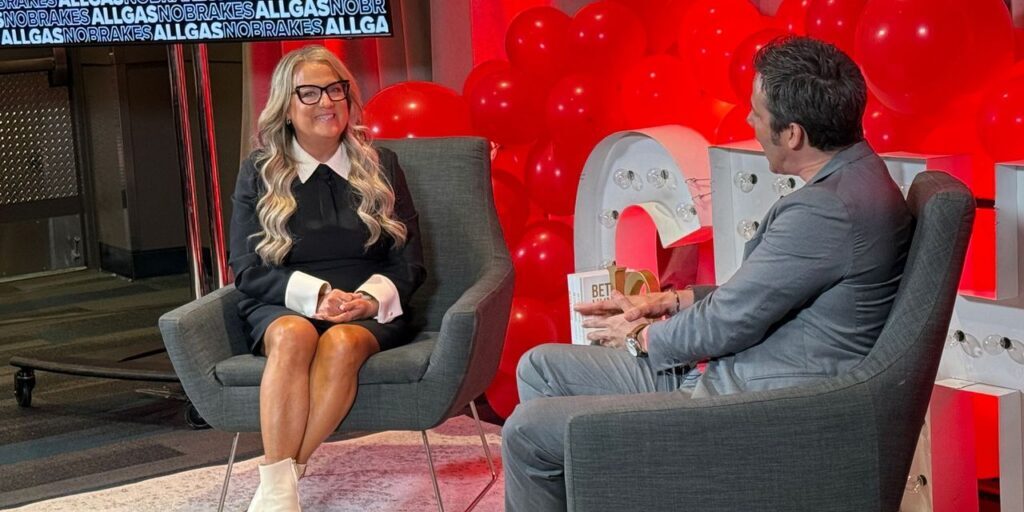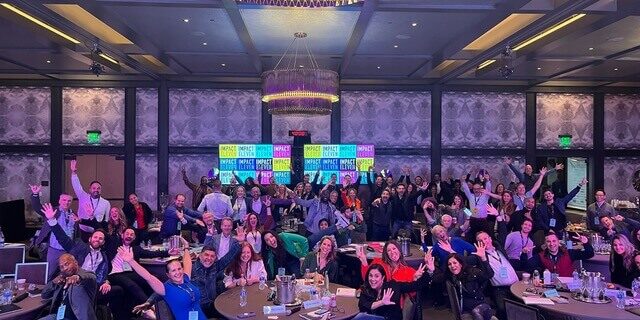“Get out of your comfort zone. Take risks. Communicate your passion. Discover your purpose. Build your network and personal leadership brand. Own your career.”
I was on the edge of my seat listening to the panel conversation on leadership, life and legacy during the EY Milestones leadership conference lead by Carolyn Slaski, EY Americas Vice Chair, Talent.
EY is committed to building a better working world — with increased trust and confidence in business, sustainable growth, development of talent in all its forms, and greater collaboration.
This is the EY purpose — and why they exist as an organization.
https://www.youtube.com/watch?v=x8lx-9vycIA
When you aspire to “build a better working world” it certainly starts with you and EY continues to invest and innovate to make certain they are one of the world’s best places to work (#29 on Fortune 100 Best Places to Work in 2017). I have supported this EY leadership conference for three consecutive years and always leave inspired to be the change I want to see in the world. This year I was delighted to spend a little time connecting with Carolyn to better understand the EY approach to talent, culture and the future of work.
How would you describe the culture of EY?
We have a very collaborative environment and culture. I know that just sounds like words, but we purposely reward collaboration so that we’re bringing all of the firm to a client. If someone sits in their little silo, that is not a rewarded behavior at all. The other thing that I think is different is our caring nature. And we try very hard to make sure our employees know that we care about them in a real way.
That includes even after they leave, doesn’t it?
We’re very deliberate about how we help people go out into the market because there’s not a better business-development tool than our alumni. No matter when you join, however long you stay, the exceptional experience will last a lifetime. They’re always EY — we always say that. They’re always part of the family.
When you think about 2020, what are some of the strategic priorities from a talent perspective?
Managing these complex teams. Thinking about the different types of workforces that we have and adjusting all of our kind of historical HR processes to serve them.
Now you have a team that’s virtual. You have people that could be in India. You have people that could be in another location. You could have contractor workers. You have technology, we have bots now.
With our performance-review tool, Lead, we now have feedback loops every 90 days. So I could see us having promotions much more frequently, when people are ready. Not necessarily when an organization says it’s ready.
Tell me more about the Lead initiative. How is that unfolding inside EY?
The idea behind Lead is to share feedback more frequently, over 90-day loops. So this isn’t a replacement for the annual performance review. It’s an addendum to it.
People don’t have to wait until the end of the year to see how it all comes together. In a high-performing culture, this is critically important.
We also focus on comparing everyone to a “gold standard,” not just to each other. It’s about “how does that person perform compared to the best you’ve ever seen?” And so it’s always having people look aspirationally.
What’s the overarching goal here?
From a talent perspective, we are aligning everything that we’re doing to make sure they’re building agile, purpose-driven leaders who ask better questions.
And so when we do that we say, “OK, what are we doing from a talent perspective to make sure we’re always coming to that end? Are we giving our people the right experiences? Are we giving them the right learning, the right training?”
It sounds like this requires some new ways of thinking about learning too.
Tal Goldhamer, chief learning officer at EY Americas, is really transforming how we are learning through simulations. Our managers are getting real-life challenges. They’re working in these teams and they have a challenge to work through. It’s really cool. When you think about the science of learning, it’s all about having those experiences. People learn by doing, not by having a PowerPoint thrown at them.
In a large, global firm, how do you strike the balance between virtual and face-to-face interaction?
We have to have that blend because we are a people business. You can’t hunker down and isolate yourself in your home office. If you need to work from home, that’s great, but you still need to connect even if it’s a virtual coffee via Skype or our telepresence rooms.
What are some other ways you’re using technology?
When we launched Lead, we also launched a chatbot called Goldie, which can answer the most common questions people ask of the talent team, freeing them up for other activities.
Also, because of Lead, we have dashboards on people, tracking their performance. We don’t have to bring everybody together and have this huge administrative process to calibrate everybody, because that work has been done for us. The leaders just take a look at it and validate it.
Our talent team can now be coaches. They can have those more-meaningful conversations, rather than processing.
And as they demonstrate these new skills, they can even earn badges?
The badges are awarded in partnership with Acclaim. You can earn them by learning a skill, demonstrating that you’re using it and by contributing back to our knowledge base. Then you can then take that badge — bronze, gold or platinum — and share it on your LinkedIn or Facebook profile. If you decide to become an alumni of the firm, you can take a badge with you. That excitement around badges has been huge because it’s such a professional validation of your work. I mean, that could serve you for your whole career.
How does all of this connect to your larger mission of making the world a better place to work?
I love the fact that we have that purpose of building a better working world. To me, I couldn’t think of a better one, because again, we’re a business of people. So we kind of start there, and all the things that we’re doing here are making sure that we’re building purpose-driven leaders that can ask better questions. And then you’re fueling a business that is building a better working world.








![[RYAN] Featured_Why Human-Centered Leadership Is the Future of Growth [RYAN] Featured_Why Human-Centered Leadership Is the Future of Growth](https://ryanestis.com/wp-content/uploads/bb-plugin/cache/RYAN-Featured_Why-Human-Centered-Leadership-Is-the-Future-of-Growth-1024x538-panorama-78e9dc1762c564216c0e9d2780c005b1-.jpg)

